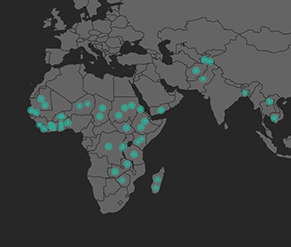Kenya puts human development - particularly education - at the center of its development strategy. The introduction of free primary education in 2003 and free secondary education in 2008, spring boarded Kenya towards remarkable progress in increasing access to education for both girls and boys.
This is illustrated by the significant progress in gross enrollment and completion rates in primary education. In 2011, the completion rate for girls was nearly 73%, slightly lower than boys at 75%. Additionally, the gross enrollment rate for boys and girls was almost equal – at 115% and 114% respectively.
However, these figures mask huge regional disparities in girls’ education – especially in terms of enrollment, retention and completion of basic education. Kenya’s 14 arid and semi-arid land (ASAL) counties - the poorest and most remote in the country - are characterized by low school enrollment and high dropout rates, making them lag behind other regions.

